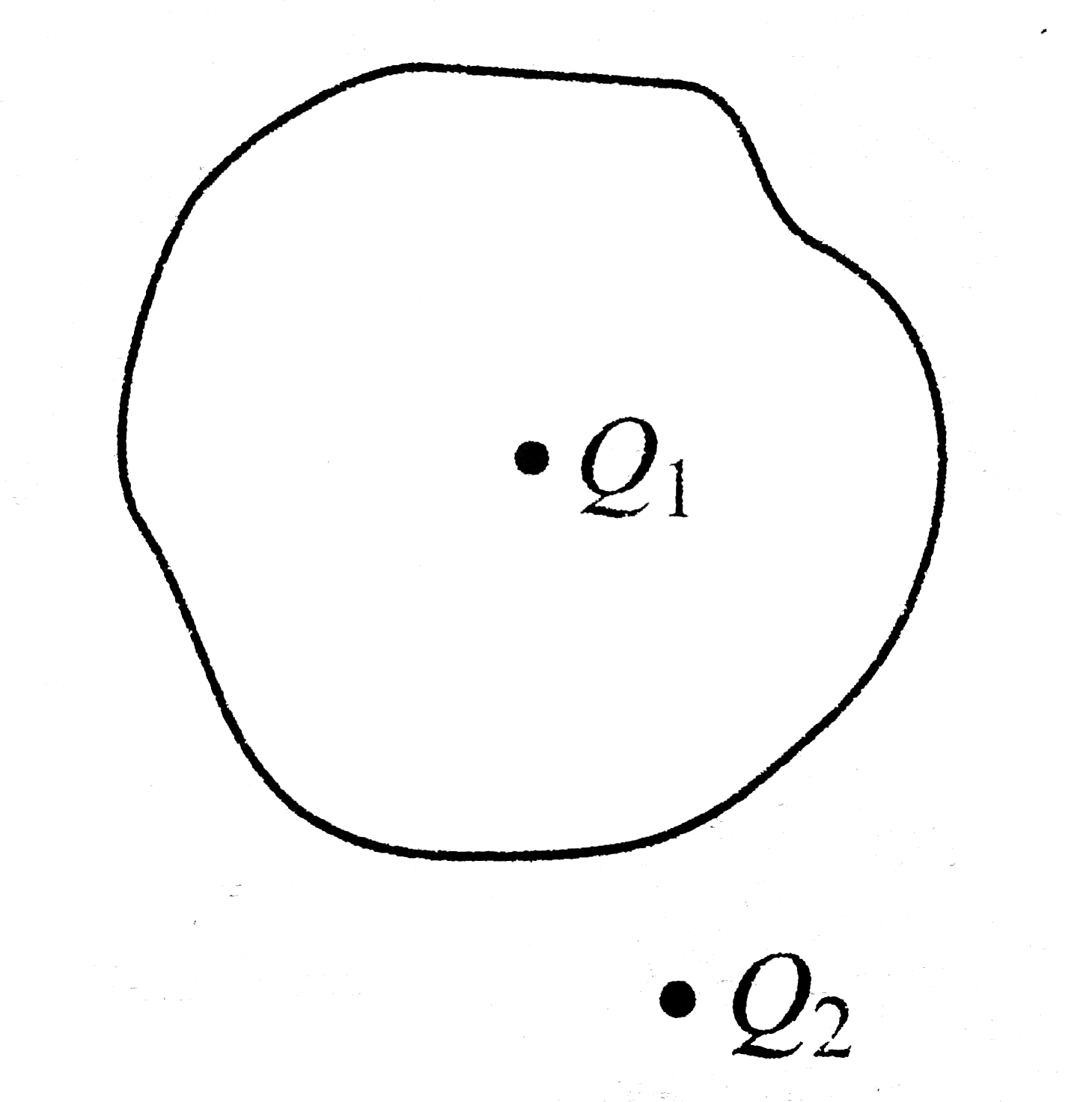If a charge is enclosed by the surface of the sphere then total flux emitted from the surface will be:
(the charge enclosed by surface)/
(charge enclosed by surface)
(charge enclosed by surface)/
0
The correct Answer is:A
To solve the problem of determining the total electric flux emitted from the surface of a sphere when a charge is enclosed within it, we can use Gauss's Law. Here’s the step-by-step solution:
Step 1: Understand Gauss's Law
Gauss's Law states that the total electric flux (Φ) through a closed surface is directly proportional to the charge (q) enclosed within that surface. Mathematically, it is expressed as:
Φ=qϵ0
where:
- Φ is the electric flux,
- q is the charge enclosed,
- ϵ0 is the permittivity of free space.
Step 2: Identify the Charge Enclosed
In this problem, we are given that there is a charge +q enclosed by the spherical surface.
Step 3: Apply Gauss's Law
According to Gauss's Law, we can substitute the charge q into the formula for electric flux:
Φ=qϵ0
Step 4: Conclusion
From our application of Gauss's Law, we find that the total electric flux emitted from the surface of the sphere is:
Φ=qϵ0
Thus, the correct answer is that the total flux emitted from the surface will be the charge enclosed by the surface divided by ϵ0.
Final Answer
The total flux emitted from the surface will be:
qϵ0
Gauss's Law states that the total electric flux (Φ) through a closed surface is directly proportional to the charge (q) enclosed within that surface. Mathematically, it is expressed as:
Φ=qϵ0
where:
- Φ is the electric flux,
- q is the charge enclosed,
- ϵ0 is the permittivity of free space.
In this problem, we are given that there is a charge +q enclosed by the spherical surface.
According to Gauss's Law, we can substitute the charge q into the formula for electric flux:
Φ=qϵ0
From our application of Gauss's Law, we find that the total electric flux emitted from the surface of the sphere is:
Φ=qϵ0
Thus, the correct answer is that the total flux emitted from the surface will be the charge enclosed by the surface divided by ϵ0.
The total flux emitted from the surface will be:
qϵ0
Topper's Solved these Questions
- ELECTRIC CHARGES AND FIELDSBOOK - AAKASH SERIESCHAPTER - ELECTRIC CHARGES AND FIELDSEXERCISE - Exercise-II
56 Videos
- ELECTRIC CHARGES AND FIELDSBOOK - AAKASH SERIESCHAPTER - ELECTRIC CHARGES AND FIELDSEXERCISE - Practice Exercise
57 Videos
- ELECTRIC CHARGES AND FIELDSBOOK - AAKASH SERIESCHAPTER - ELECTRIC CHARGES AND FIELDSEXERCISE - Assess Your Self
13 Videos
- DUAL NATURE OF RADIATION AND MATTERBOOK - AAKASH SERIESCHAPTER - DUAL NATURE OF RADIATION AND MATTEREXERCISE - PRACTICE EXERCISEX
42 Videos
- ELECTRIC FIELD AND POTENTIALBOOK - AAKASH SERIESCHAPTER - ELECTRIC FIELD AND POTENTIALEXERCISE - PROBLEMS (LEVEL-II)
26 Videos
Similar Questions
Consider a closed surface of arbitatry shape as shown in figure. Suppose a single charge Q1 is located at some point within the surface and second charge Q2 is located outside the surface.

a. What is the total flux passing through the surface due to charge Q1?
b. What is the total flux passing through the surface due to charge Q2?
View SolutionA charge Q μc is placed at the centre of cube, the flux coming out from any surfaces will be : -
View Solution
Knowledge Check
Assertion : Total flux through a closed surface is zero if no charge is enclosed by the surface.
Reason : Gauss law is true for any closed surface, no matter what its shape or size is.AIf both assertion and reason are true and reason is the correct explanation of assertion.BIf both assertion and reason are true but reason is not the correct explanation of assertion.CIf assertion is true but reason is false.DIf both assertion and reason are false.
When a 10 μC charge is enclosed by a closed surface, the flux passing through the surface is ϕ. Now another 10 µC charge is placed inside the closed surface, then the flux passing through the surface is ______.
View SolutionAn electric dipole of diople moment 20×10−6Cm is enclosed by a closed surface. What is the net electric flux coming out of the surface ?
View SolutionThe photoelectrons emitted from a metal surface:
View SolutionThe electric flux through the surface

View SolutionThe electric flux through the surface

View SolutionThe electric flux through the surface

View SolutionA surface enclosed an electric dipole, the flux through the surface is -
View Solution
